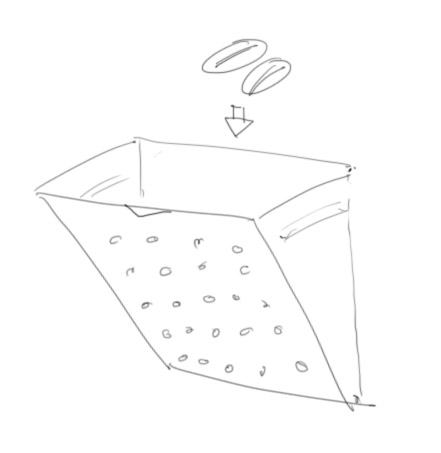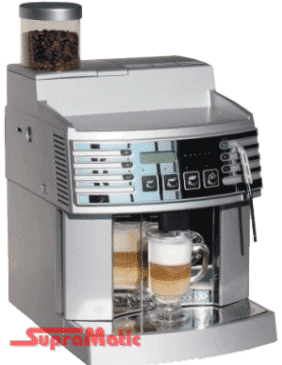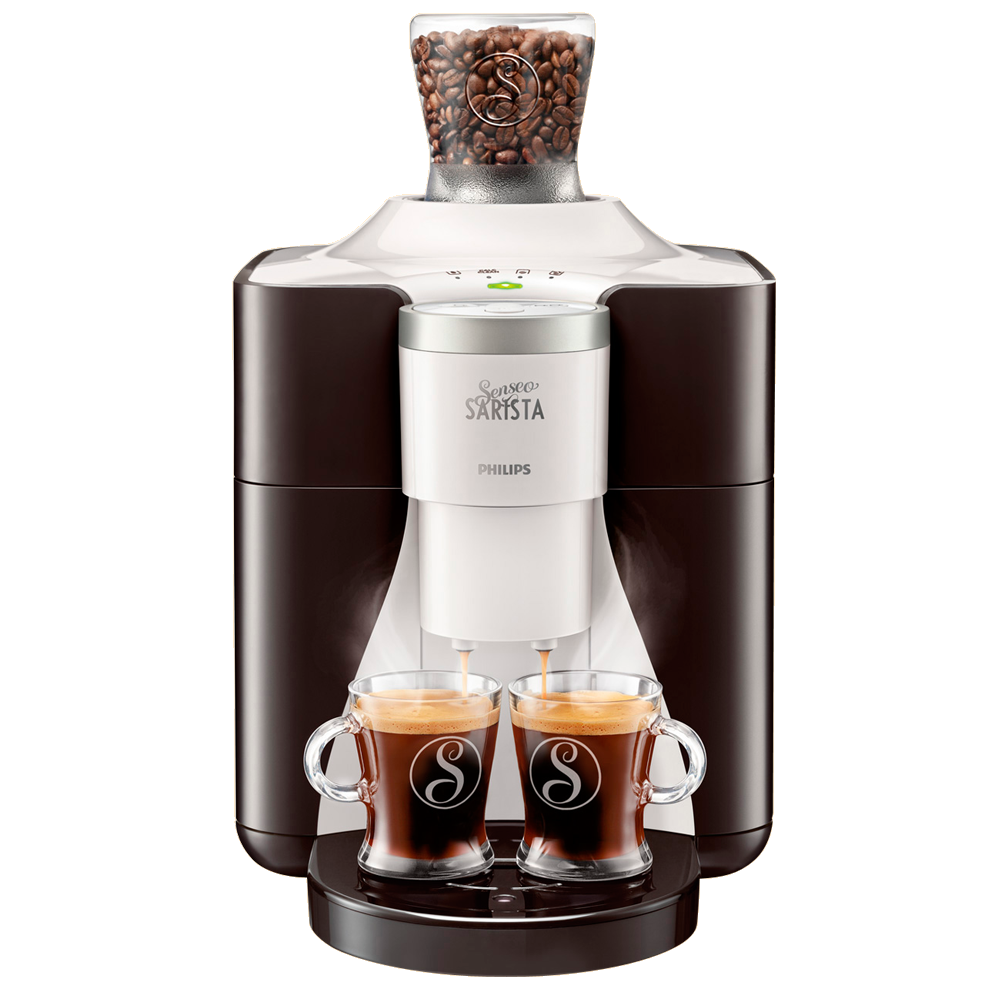You need the bean container or filling mechanism to communicate in its physical presence alone, that it will not hold water. Additionally, emphazising what is expected, coffee beans, in form of an icon might help.
This is just a crude sketch to visually show what I mean by "physically" communicating that the water does not go in here. Devise the coffee bean filling latch in a way that has visible holes that will obviously let water through, but are small enough to hold coffee beans.

What this approach does is not only solve your communication problem, but at the same time this will eliminate the actual breaking of the machine by pouring in water, because the water will simply not run into the slot (my sketch is crude and I am no product designer nor engineer, but you get the point - make the right angles and curves and whatnot and it's simultaneously a physical impossibility to get the water in).
P.S.: If you get rich implementing this I will insist on receiving a free coffee machine even though I prefer tea!
Edit: With so many comments and @trisweb's answer, I felt compelled to refine my suggested design a bit:

- Make the depot a drawer, because drawers pose an even less intuitive choice for pouring water into (@trisweb's answer)
- Then have the drawer (or its bottom part) be perforated (@JanSchejbal's suggestion)
- Make the drawer have an explicit coffee beans icon (@Davejarvis's suggestion)
- Make the drawer's front transparent, so users can see the level of coffee beans
- Ensure no water can run into the machine, by making the back of the drawer seal the machine insides off when the latch is fully pulled out
- Ensure air tight sealing of coffee beans when the drawer is closed (should be easy to implement with this design, as the perforated bottom can easily be covered when inside the machine - I imagine that engineering the bottom cover to partially slide off when inside the machine is a plausible way of retrieving the beans for grinding) (@Andrè's comment)












 Around the rim of the lid, the word 'BEANS' could be engraved in a lighter shade of grey.
OR place a holster for the coffee bean scoop on the cylinder and then users will visually understand that whatever goes in must need to be scooped.
Around the rim of the lid, the word 'BEANS' could be engraved in a lighter shade of grey.
OR place a holster for the coffee bean scoop on the cylinder and then users will visually understand that whatever goes in must need to be scooped. 
